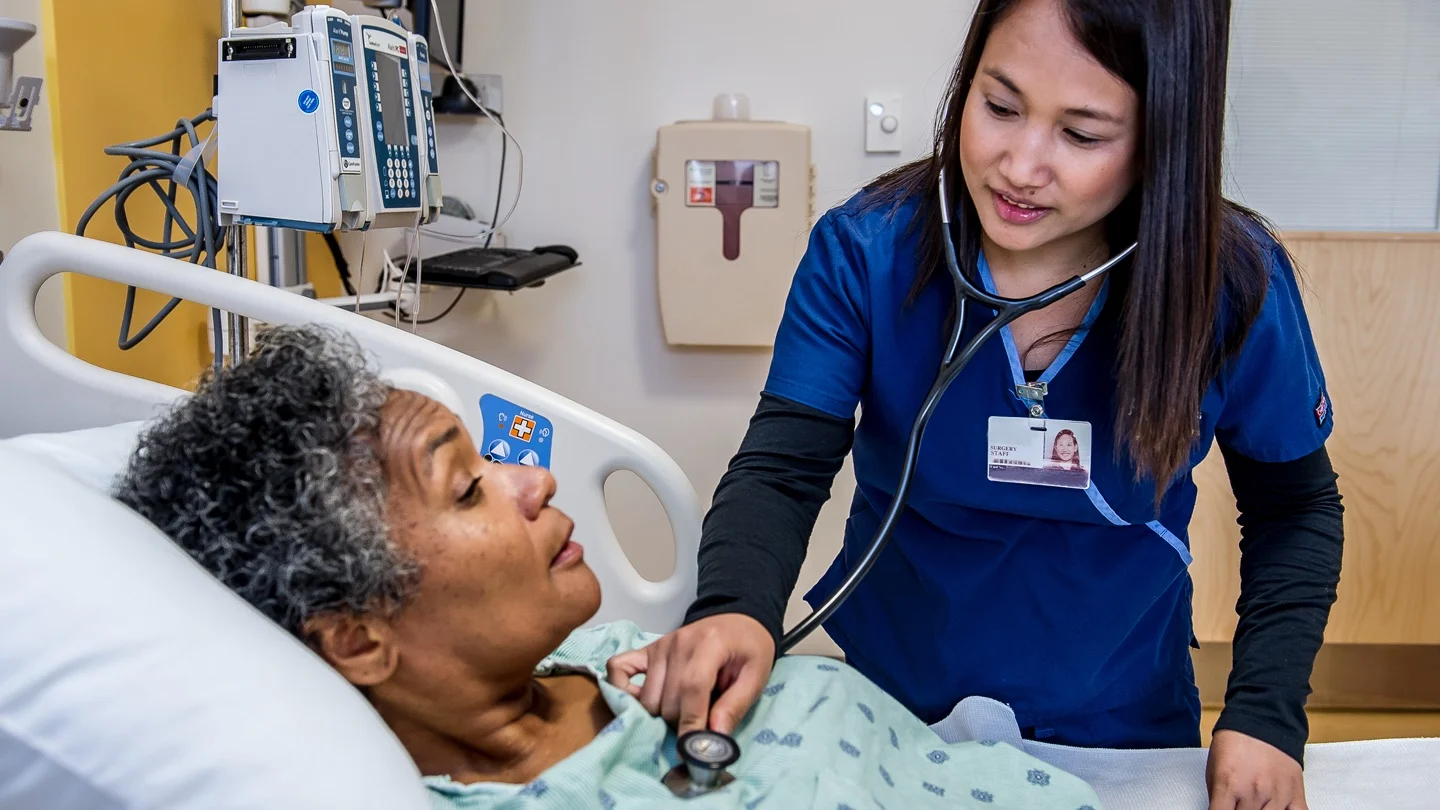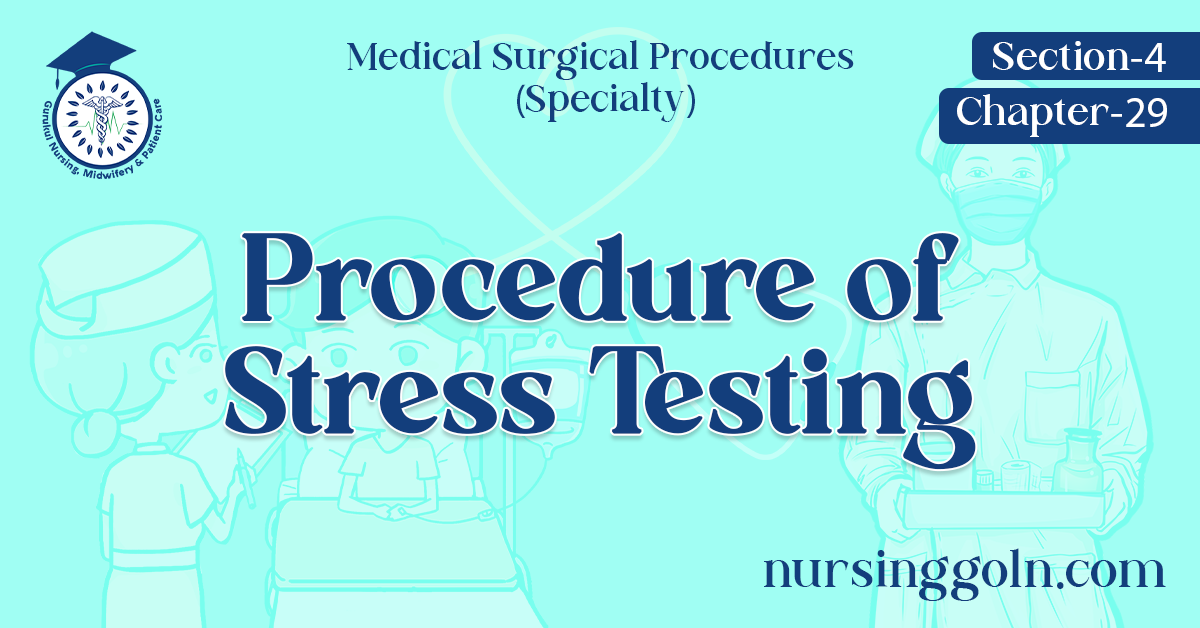Today our topic of discussion is Procedure of Stress Testing.
Procedure of Stress Testing

Procedure
- Stress testing requires the use of a bicycle ergometer or a treadmill with continuous electrocardiac recording
- The test is performed in a series of stages in which the client exercise for 3 minutes. Verities of protocols are used in stress testing
- The Bruce protocol involves gradual increase in speed and intervals of short duration .
- At the end of each stage, a 12 lead ECG is recorded.
- After each stage, the work load or graded load is increased
- This is accomplished by increasing the speed or resistance of the bicycle or treadmill
- The stress testing continues until the client reaches 85% of the maximum heart rate, becomes symptomatic or displays electrocardiography changes consistent with ischemia.

- The maximum heart rate is usually determined by normograms.
- A gross estimate of the maximum heart rate is 220 beats per minute minus the client’s age If a client is physically unable to exercise to the point of 85% of the maximum heart rate, a dipyridamole (persantine) scan may be performed
- Dipyridamole may be given intravenously or by mouth. It causes coronary artery dilatation similar to the response of the coronary arteries to exercise
- As the graded exercise begins, a multichanneled ECG is recorded.
- A 12 lead ECG is recorded and the blood pressure is checked as each workload ends (every 3 minute increment)
- Observe foe signs to stop the stress testing, for example, falling blood pressure, three consecutive premature ventricular contractions, chest pain or exhaustion.
Findings
A 1 mm depression of the ST segment is positive stress test, indicating myocardial ischemia.
After Care
- Cardiac monitoring is continued for 5-10 minutes after the testing to evaluate the client’s physiologic responses.
- Blood pressure is checked
- Remove conduction jelly and assist in robbing the client if necessary
- Evaluate the client’s physical and emotional response to testing
- Instruct the client to rest and not to take hot shower or baths for 2-4 hours.

Contraindications
- Uncontrolled arrhythmias
- Uncorrected valvular diseases
- Cardiomegaly
- Severe anemia
- Unstable angina
- Uncontrolled hypertension
- Congestive heart failure
- Pericarditis and myocarditis.
Read more:
